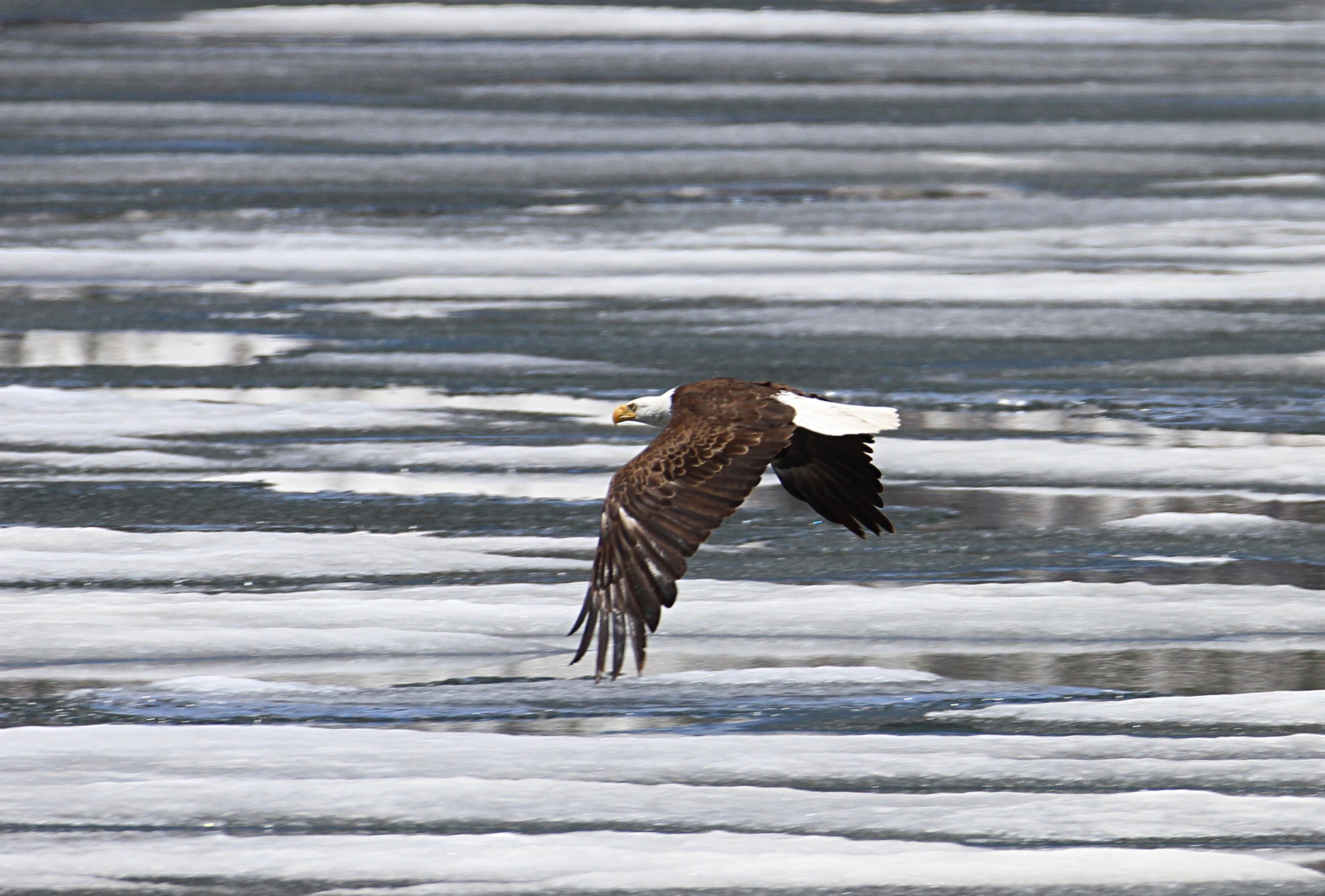Declining Salmon Lead Eagles to Seek Out Food in Washington’s Agricultural Areas

As warming streams reduce the populations of chum salmon in northwest Washington, bald eagles are exploring adjacent farmland for alternative foods.
|AUGUST 30, 2022
Every winter, the carcasses of recently spawned chum salmon draw hundreds of bald eagles from across western North America to the Pacific Northwest rivers in search of food. However, as salmon populations decline due to climate change and other stressors caused by humans, eagles may struggle to survive on this dwindling food source. A new study found that the eagles are redistributing to other habitats — including agricultural sites like dairy farms — to find food.
Photo Credit: A bald eagle flies over a partially frozen lake during the winter in search of food. Photo: Jim Peaco/Flickr
This is not the first time that eagles have been threatened by human activities. During the mid-20th century, the pesticide DDT devastated America’s bald eagles. The chemical accumulated in the bodies of predatory birds like eagles, and it led to thinning of their chicks’ eggshells, significantly reducing their reproductive success rate. By the 1950s, bald eagles had been completely wiped out of Washington and nearly out of the United States. However, in 1972, DDT was banned after the book Silent Spring by Rachel Carson made people realize the crushing impact of DDT on wildlife, and eagles were able to make a comeback. In 2007, bald eagles were removed from the federal Endangered Species Act and a decade later removed from Washington State’s protected species list — a huge success story for conservationists and eagles alike.
Now, the birds are facing a new threat.
Bald eagles migrate seasonally in search of food — especially chum salmon, their favorite. While some eagles don’t migrate at all if they continue to have access to food throughout the cold winter months, others move to areas with open water when lakes and streams freeze over in the winter. Northwest Washington, with its free-flowing rivers and open seas filled with salmon, has historically been a refuge for these migrating eagles during the winters. Adult salmon reach the end of their lives after returning to breed in their birth stream. Following the annual fall spawning of chum salmon, thousands of carcasses litter the banks of Washington rivers.
However, declines in the availability of salmon over the past century now threaten these eagles and other species that have long relied on the fish. Climate change has led to heavy river flows and floods in Washington in late fall that have washed the dead salmon out to sea before they can be eaten by the eagles. In addition, many salmon populations in the region have shrunk due to other human-caused changes to their habitat, including dams and warming streams. Stream temperatures in recent years have spiked as glaciers retreat and provide less cool water, atmospheric temperatures increase, and intense heat waves become more common. These changes are bad news for a cold-water species like salmon that can experience heat stress and die when water temperatures rise too high, and it’s bad news for the predators that rely on them, too—including bald eagles.
Original story continues…
